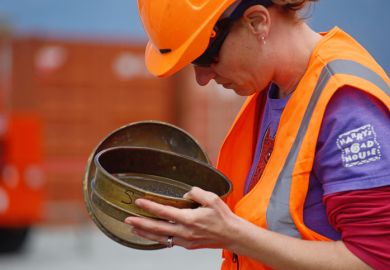If newspapers, TV programmes and bookshop display stands are anything to go by, science in the UK is more popular and well communicated than ever before.
Even back in 2006, before the impact agenda became institutionalised, a Royal Society report indicated that 74 per cent of UK scientists working in academia had undertaken a public engagement activity in the previous year, up 18 per cent since 2000. However, according to the 2014 Public Attitudes to Science survey (its most recent iteration), 40 per cent of UK adults feel that scientists are poor at communicating, and only 45 per cent are aware of scientific research. So all that effort by scientists does not seem to have paid off to the degree that they might have hoped.
Probing better public awareness of – and engagement in – science is the aim of the inquiry by the House of Commons Science and Technology Committee into the state of UK science communication. We suggest that while scientists are keen to participate in public engagement, we tend to do so piecemeal, without a long-term vision and a clear strategy to develop momentum and legacy. For example, when giving inspiring talks and performing eye-catching visual experiments in schools, one often wonders whether the awe of the moment will last long in the audience’s memory and cause their attitude towards science to change.
This said, there are already very good examples of science communication embracing long-term strategies and clear objective-setting. For example, our own droso4schools project aims to turn experiences from school visits into curriculum-relevant lessons and teacher resources. Numerous citizen science projects run by Zooniverse are all long-term initiatives with the common objective of providing “opportunities for people around the world to contribute to real discoveries”.
Similarly, The Brain Box, a science fair event that we recently organised with Manchester City Council and contributors from across the city, was designed with the clear objective of raising awareness of brain-related research and to encourage younger participants to consider study in neuroscience. More than 60 activity stands and arts presentations were arranged into eight themes. We surveyed a large number of the 5,400 visitors who attended the event, and we plan to follow up with them in the future, to see if there has been any long-term impact in terms of raising awareness of brain-related research.
The event was also supported by more than 150 volunteers. We asked the research scientists among them to fill in a detailed event evaluation form, and more than 80 per cent of respondents reported that as a result of the event they will change the ways in which they communicate science in future.
However, such bottom-up initiatives are not enough. Common objectives must be agreed at a higher level, by the research councils and funding agencies that support such activities. Funding organisations have it in their power to enable and enforce an objective-driven common agenda by supporting long-term initiatives, the implementation of genuine two-way communication with the public and the cumulative generation of high-quality resources, such as toolkits and training for conducting effective, longitudinal evaluation.
A good example of an overarching objective that would work at local, regional and national levels is the vision of the British Science Association to achieve “a future where science is seen as a fundamental part of our culture and society, instead of set apart from it”.
We hope that the parliamentary inquiry will push things further in this direction, building on existing networks and initiatives to produce a communication culture that is tangible, long term and achievable and that helps to establish science in the cultural mainstream.
To that end, it is also vital for those with good ideas to come forward and to make themselves heard, so that others can replicate their successes. Science itself is widely seen as an increasingly collective endeavour: communication of it should not be left to individuals to blindly experiment with.
Sam Illingworth is a senior lecturer in science communication at Manchester Metropolitan University and co-author of Effective Science Communication, due out in October. Andreas Prokop is a professor of neurobiology at the University of Manchester.
POSTSCRIPT:
Print headline: Strategic engagement
Register to continue
Why register?
- Registration is free and only takes a moment
- Once registered, you can read 3 articles a month
- Sign up for our newsletter
Subscribe
Or subscribe for unlimited access to:
- Unlimited access to news, views, insights & reviews
- Digital editions
- Digital access to THE’s university and college rankings analysis
Already registered or a current subscriber? Login










